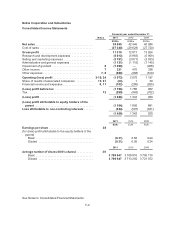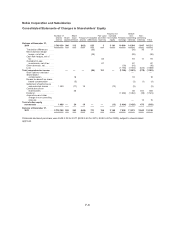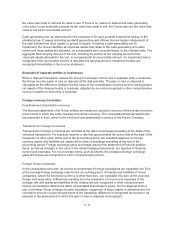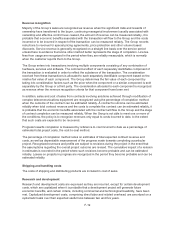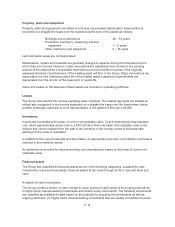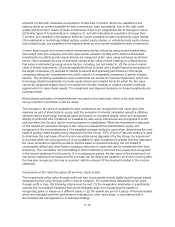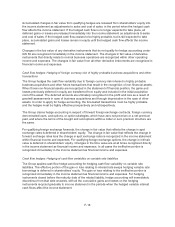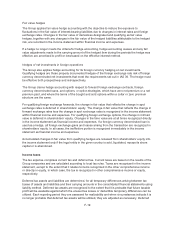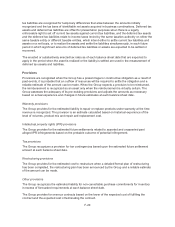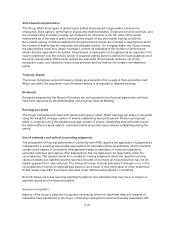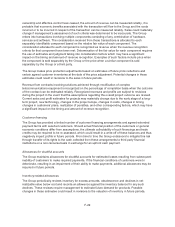Nokia 2011 Annual Report Download - page 222
Download and view the complete annual report
Please find page 222 of the 2011 Nokia annual report below. You can navigate through the pages in the report by either clicking on the pages listed below, or by using the keyword search tool below to find specific information within the annual report.Revenue recognition
Majority of the Group’s sales are recognized as revenue when the significant risks and rewards of
ownership have transferred to the buyer, continuing managerial involvement usually associated with
ownership and effective control have ceased, the amount of revenue can be measured reliably, it is
probable that economic benefits associated with the transaction will flow to the Group and the costs
incurred or to be incurred in respect of the transaction can be measured reliably. The Group records
reductions to revenue for special pricing agreements, price protection and other volume based
discounts. Service revenue is generally recognized on a straight line basis over the service period
unless there is evidence that some other method better represents the stage of completion. License
fees from usage are recognized in the period when they are reliably measurable, which is normally
when the customer reports them to the Group.
The Group enters into transactions involving multiple components consisting of any combination of
hardware, services and software. The commercial effect of each separately identifiable component of
the transaction is evaluated in order to reflect the substance of the transaction. The consideration
received from these transactions is allocated to each separately identifiable component based on the
relative fair value of each component. The Group determines the fair value of each component by
taking into consideration factors such as the price when the component or a similar component is sold
separately by the Group or a third party. The consideration allocated to each component is recognized
as revenue when the revenue recognition criteria for that component have been met.
In addition, sales and cost of sales from contracts involving solutions achieved through modification of
complex telecommunications equipment are recognized using the percentage of completion method
when the outcome of the contract can be estimated reliably. A contract’s outcome can be estimated
reliably when total contract revenue and the costs to complete the contract can be estimated reliably, it
is probable that the economic benefits associated with the contract will flow to the Group and the stage
of contract completion can be measured reliably. When the Group is not able to meet one or more of
the conditions, the policy is to recognize revenues only equal to costs incurred to date, to the extent
that such costs are expected to be recovered.
Progress towards completion is measured by reference to cost incurred to date as a percentage of
estimated total project costs, the cost-to-cost method.
The percentage of completion method relies on estimates of total expected contract revenue and
costs, as well as dependable measurement of the progress made towards completing a particular
project. Recognized revenues and profits are subject to revisions during the project in the event that
the assumptions regarding the overall project outcome are revised. The cumulative impact of a revision
in estimates is recorded in the period where such revisions become probable and can be estimated
reliably. Losses on projects in progress are recognized in the period they become probable and can be
estimated reliably.
Shipping and handling costs
The costs of shipping and distributing products are included in cost of sales.
Research and development
Research and development costs are expensed as they are incurred, except for certain development
costs, which are capitalized when it is probable that a development project will generate future
economic benefits, and certain criteria, including commercial and technological feasibility, have been
met. Capitalized development costs, comprising direct labor and related overhead, are amortized on a
systematic basis over their expected useful lives between two and five years.
F-12


